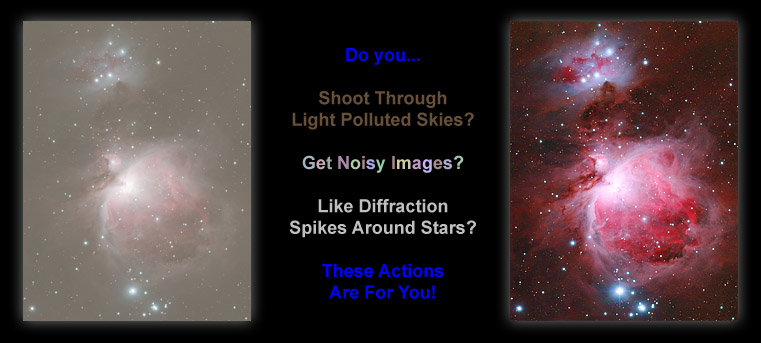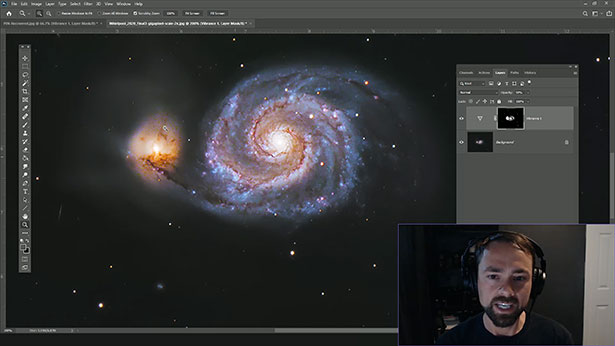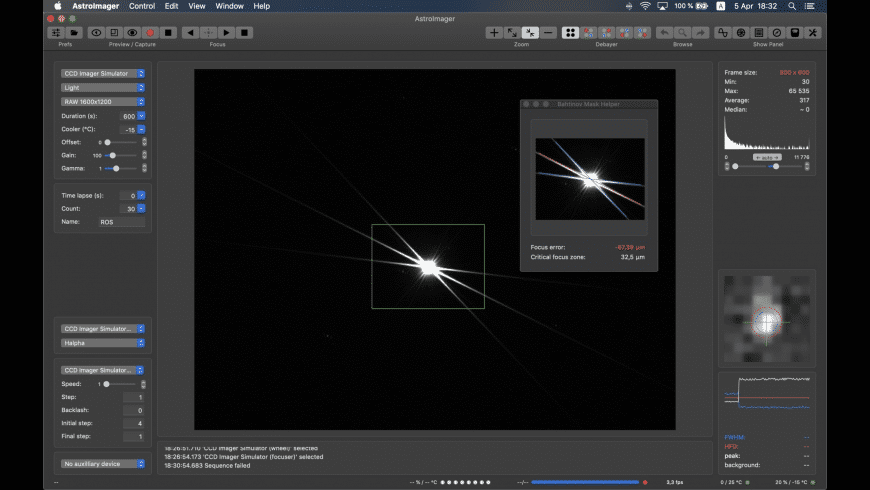
These are some of the programs I use or have tried and recommend:
Siril is meant to be Iris for Linux (sirI-L). It is an astronomical image processing tool, able to convert, pre-process images, help aligning them automatically or manually, stack them and enhance final images. In 2017, it also began to work on Mac OS X and Windows. MicroObservatory Image V2.2- free image analysis software from CFA (Center for Astrophysics) software Nebulosity V3 - $80 Control QSI and Meade DSI CCD cameras on the Mac PixInsight64- image processing software PixInsight Links by Topicby Sean Curry.
- WcCtrl: helps to control the settings of several webcam models (freeware).
- WcRmac: edits the firmware of several webcam models (freeware).
- SkyChart: Sky map (freeware).
- AutoStar Suite: Sky map from Meade.
- Messier Marathon: generates a list of Messier objects visibles from your location (freeware).
- NGC Observer: generates a list of objects from several catalogs (Messier, NGC, etc.) visibles from your location.
- AstroPlanner: observation planner, much more more sophisticated than the previous. Free version with some limitations.
- Bahtinov Grabbber: helps focusing using a Bahtinov mask (freeware).
- EQAlign: scope polar aligning, periodic error analysis and autoguiding (freeware).
- Desire: long exposure imaging with modified webcams (freeware).
- K3CCDTools: photo and video acquisition, planetary image processing (freeware version). See my image processing video tutorial using this software.
- Envisage: image acquisition, calibration, aligning and stacking for Meade DSI cameras.
- MaxIm DL: image acquisition, calibration, aligning, stacking and post-processing.
- DeepSkyStacker: image calibration, aligning and stacking specific for deep space astrophotography. See my image processing video tutorial using this software.
- RegiStax: image calibration, aligning and stacking specific for planetary astrophotography. It can also be used for deep space astrophotography (freeware).
- IMerge: makes astrophotography mosaics (freeware).
- Focus magic: improves images focusing and contrast.
- PixInsight LE: image post-processing (freeware version).

- Photoshop: image post-processing.
- Iris: image calibration, aligning, stacking and post-processing. (freeware).
Nikita Misiura is an astrophotographer and software developer who created the StarNet++ software system which provides the ability to remove stars from astrophotography images.


As Misiura notes, “StarNet++ is neural network-based software that can make star removal from images simpler. The idea was to train a neural network that can remove stars in one simple step, avoiding time-consuming-thousand-steps procedures with dozens of parameters to tune.”
Since its debut last year, Misiura has been working with the amateur astronomy community to continuously improve on the software. For Photoshop users the software provides the ability easily drag-and-drop your images into the platform to remove the stars. It can be downloaded on Sourceforge here. There is also a StarNet++ module for the popular Pixinsight astrophotography image processing platform which is available natively for FreeBSD, Linux, Mac OS X and Windows operating systems.
There is a Python version for more advanced users that is available on GitHub here. The whole code is open-source and users need to have the ability to work with Python, Tensorflow, etc. The code provides the ability to train the neural network on your own data or modify the code for your needs.
Trevor Jones with Astro Backyard has published a nice review and how to tutorial of StarNet++ on his website.

As he notes, “The process of reducing or removing stars in an astrophoto is not a new concept in the astrophotography image processing world. This technique is used by many amateur astrophotographers to help reveal the delicate structures of their deep-sky object.
I even wrote a tutorial on removing stars in Photoshop, and it was my go-to method for removing/reducing star sizes for many years. Now, I include StarNet++ as a part of my workflow at this stage.
By separating the stars from the nebula or galaxy in your images, you can control and manipulate the data in a more deliberate way overall. A quick example of this would be to brighten the outer regions of the Andromeda Galaxy without making the surrounding stars brighter and overpowering.”
Real-time Image Processing Software
Below is a video tutorial by Chuck’s Astrophotography providing an overview of using the StarNet++ software.

Astronomy Image Processing
And to make it easier for you to get the most extensive news, articles and reviews that are only available in the magazine pages of Astronomy Technology Today, we are offering a 1 year magazine subscription for only $6! Or, for an even better deal, we are offering 2 years for only $9. Click here to get these deals which only will be available for a very limited time. You can also check out a free sample issue here.
